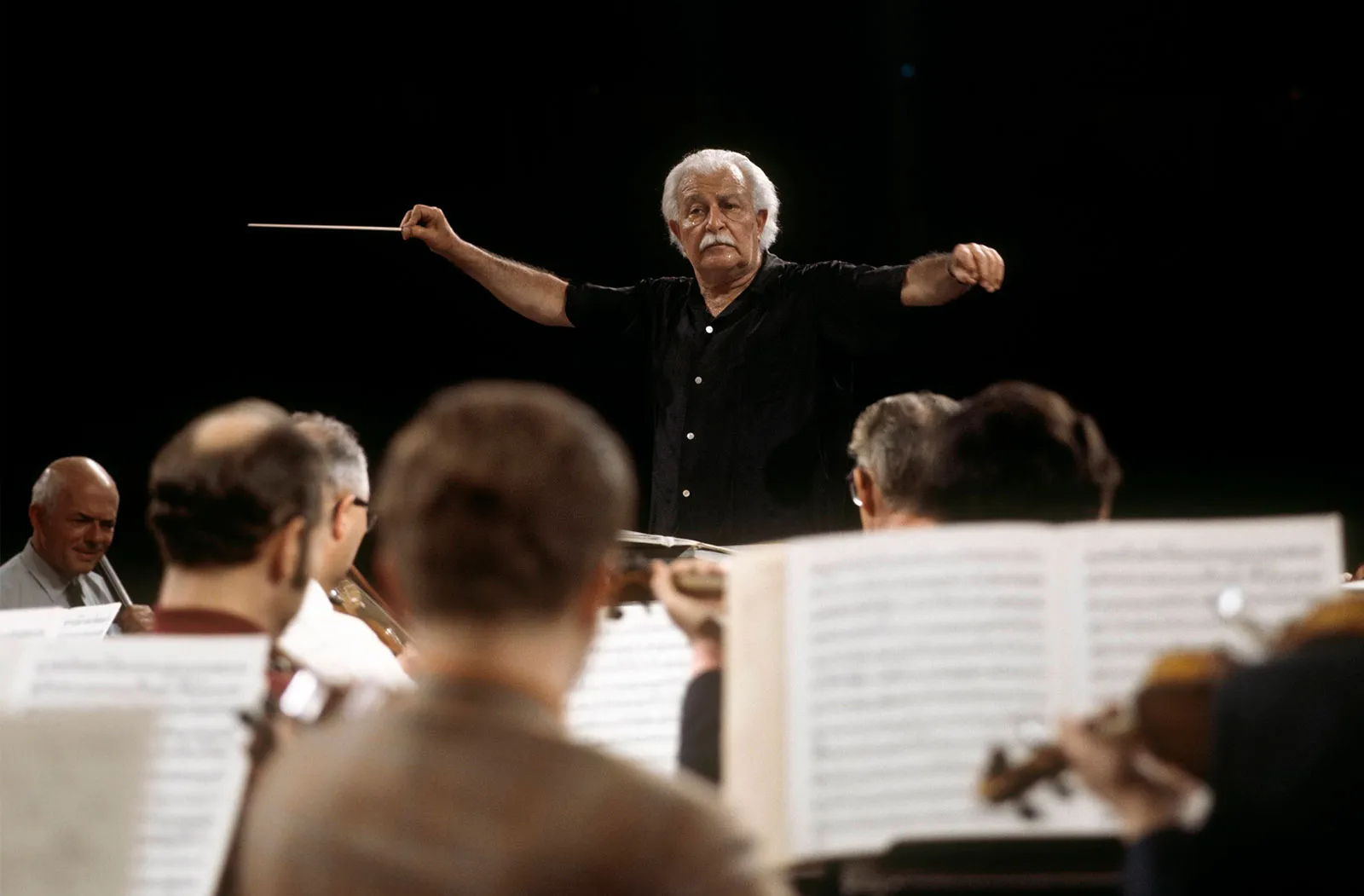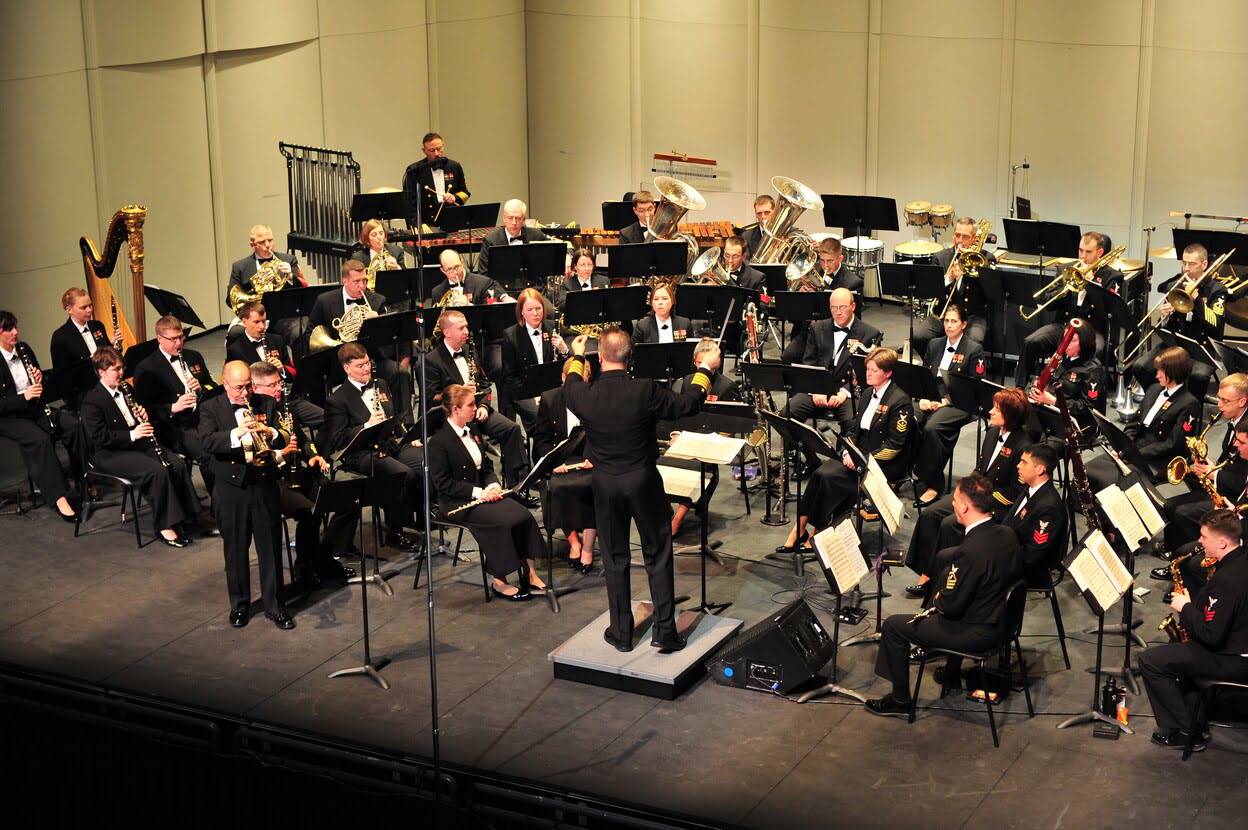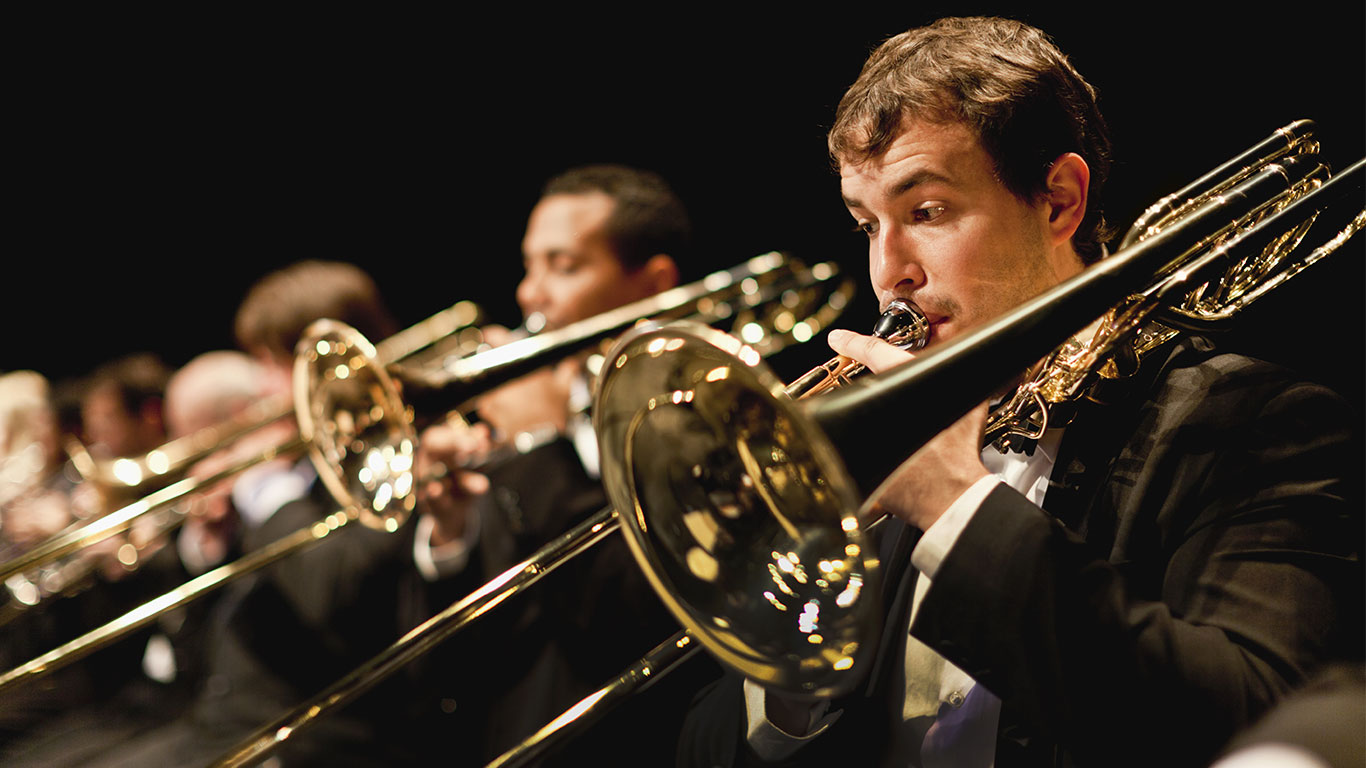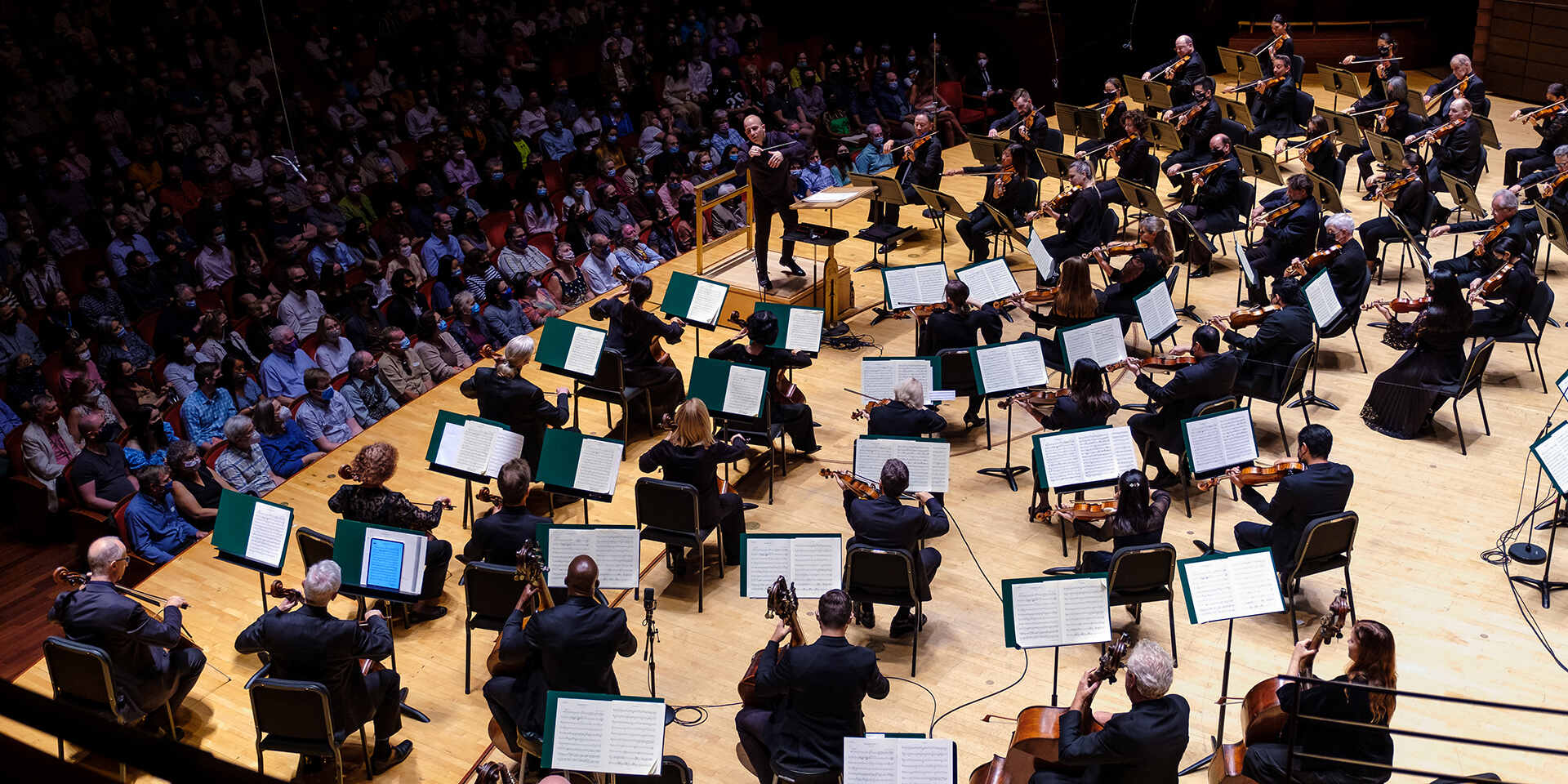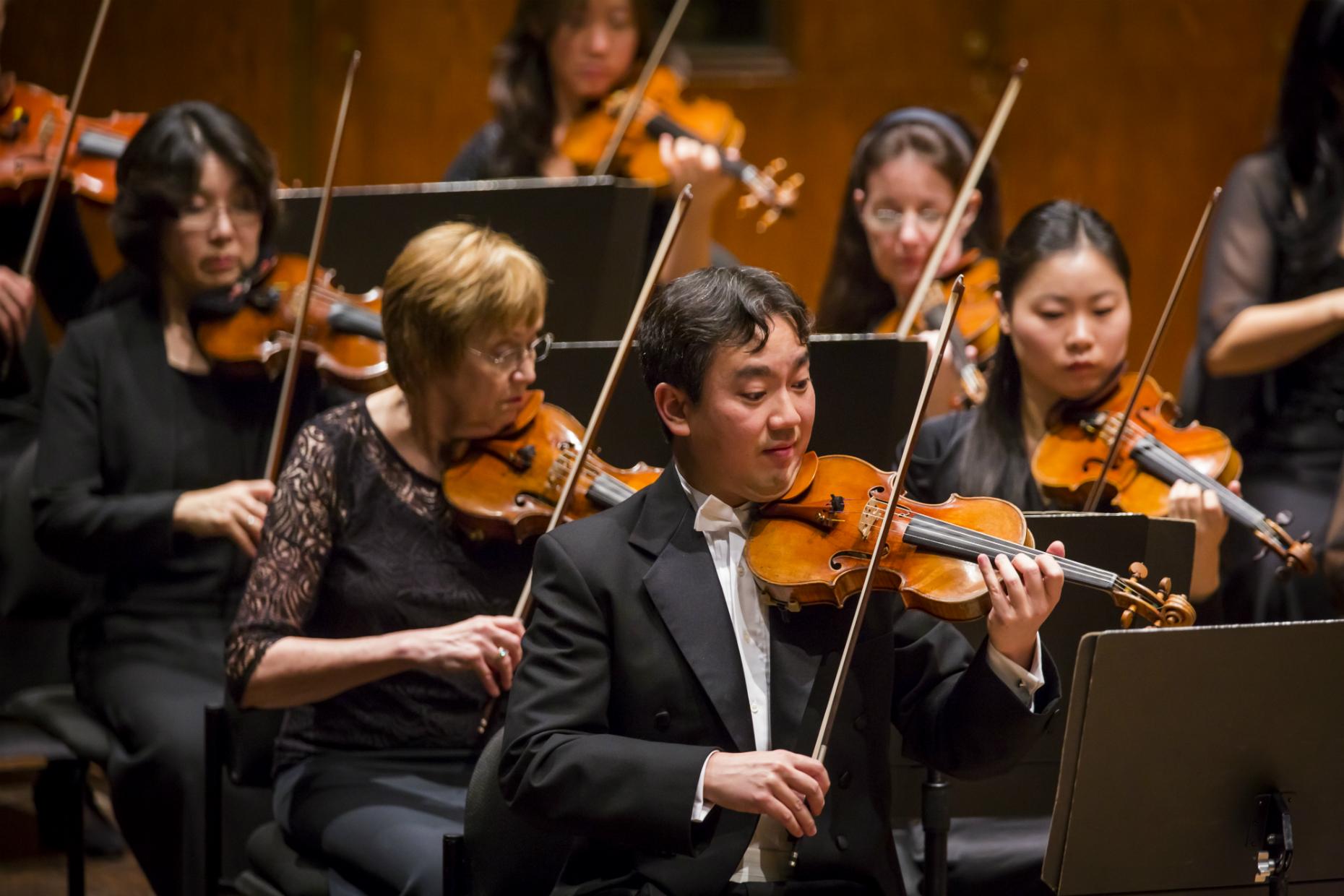Home>Production & Technology>Orchestra>Why Does An Orchestra Tune To An Oboe
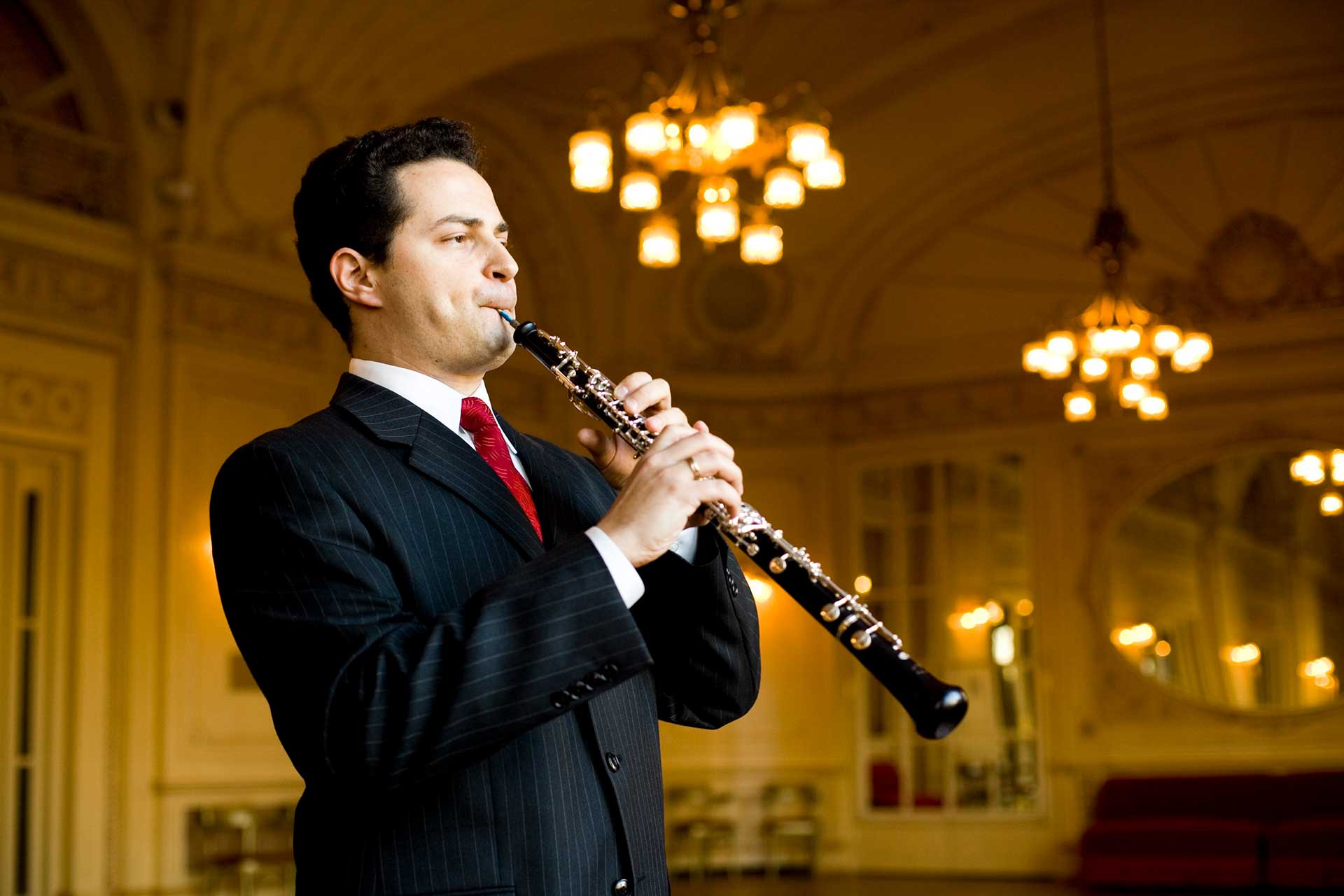

Orchestra
Why Does An Orchestra Tune To An Oboe
Published: February 25, 2024
Discover why orchestras tune to the oboe and the significance of this process. Learn about the role of the oboe in setting the pitch for the entire orchestra. Explore the fascinating world of orchestral tuning.
(Many of the links in this article redirect to a specific reviewed product. Your purchase of these products through affiliate links helps to generate commission for AudioLover.com, at no extra cost. Learn more)
Table of Contents
Introduction
Orchestral music is a harmonious blend of diverse instruments, each contributing its unique timbre and pitch to create a symphonic masterpiece. However, before the conductor raises the baton and the musicians begin to play, there is a crucial yet often overlooked aspect of orchestral preparation: tuning. This process of aligning the instruments to a standard pitch ensures that the ensemble performs in perfect harmony.
At the heart of this meticulous tuning ritual lies the oboe, a woodwind instrument revered for its distinctive sound and unwavering pitch. The oboe's prominent role in the orchestra extends beyond its melodic contributions; it serves as the cornerstone of orchestral tuning, guiding musicians to achieve unity in pitch and harmony.
The oboe's unique characteristics make it an ideal candidate for this pivotal role. Its piercing, penetrating tone and inherent stability in pitch provide a reliable reference point for the entire orchestra to tune to. As the oboist plays a sustained note, the other musicians carefully adjust their instruments to match its pitch, ensuring that the collective sound resonates in perfect accord.
Beyond its practical function in tuning, the oboe holds a rich historical significance within the orchestral landscape. From its origins in ancient civilizations to its evolution into a staple of classical music, the oboe has left an indelible mark on musical history. Its enduring presence in orchestras worldwide is a testament to its unwavering influence and significance.
In this article, we will delve into the pivotal role of the oboe in orchestral tuning, exploring its unique sound, historical significance, and enduring relevance in contemporary orchestral performances. By understanding the integral role of the oboe in orchestral tuning, we gain a deeper appreciation for the meticulous artistry and precision that underpin the symphonic experience.
The Role of the Oboe in Orchestral Tuning
The oboe's pivotal role in orchestral tuning is indispensable, serving as the linchpin for achieving harmonious cohesion among the diverse instruments comprising the orchestra. As the orchestra assembles for a performance, the oboist assumes a position of utmost significance, poised to initiate the intricate process of tuning. The oboe's unique sound and inherent stability in pitch make it the instrument of choice for this critical task.
When the oboist plays a sustained note, typically an A, the distinct timbre of the oboe permeates the concert hall, commanding the attention of the assembled musicians. This sustained note serves as the sonic lodestar, guiding the orchestra towards a unified pitch standard. As the oboe's resonant sound reverberates through the performance space, each section of the orchestra meticulously adjusts their instruments to align with this reference pitch. From the resonant strings to the resounding brass and the mellifluous woodwinds, every musician harmonizes their instrument to the oboe's unwavering pitch, ensuring that the collective sound resonates in perfect accord.
The oboe's selection as the standard-bearer for orchestral tuning is not arbitrary; rather, it is a testament to the instrument's inherent qualities that render it supremely suited for this role. The oboe's penetrating tone possesses a clarity and purity that pierces through the orchestral tapestry, making it easily discernible amidst the diverse array of instruments. Moreover, the oboe's pitch stability is unparalleled, providing a reliable and unwavering reference point for the entire orchestra to tune to. This inherent stability is a product of the oboe's design, which includes a conical bore and a double reed, imbuing the instrument with a remarkable capacity for maintaining pitch consistency.
In essence, the oboe's role in orchestral tuning transcends the mechanical act of aligning pitches; it embodies the essence of collective harmony and precision within the orchestra. The oboist, wielding the instrument with finesse and expertise, assumes the mantle of guiding the ensemble towards a state of sonic equilibrium, where each instrument resonates in consonance with the others. The oboe's role in orchestral tuning is a testament to the instrument's enduring significance and its indispensable contribution to the orchestral experience.
This exploration of the oboe's role in orchestral tuning unveils the intricate interplay between individual instruments and the collective pursuit of musical excellence. As the oboe's resonant tones cascade through the orchestra, they symbolize the unification of disparate musical voices into a harmonious whole, laying the foundation for a transcendent symphonic performance.
The Unique Sound and Characteristics of the Oboe
The oboe, often hailed as the "voice of the orchestra," possesses a timbre that is both distinctive and evocative. Its sound is characterized by a piercing clarity that cuts through the orchestral texture, commanding attention with its penetrating resonance. This distinctiveness arises from the oboe's construction and the manner in which it produces sound.
The oboe's construction features a conical bore, which imparts a unique sonic quality distinguished by its rich, warm undertones and brilliant, penetrating overtones. This combination results in a sound that is simultaneously vibrant and resonant, infusing the orchestra with a captivating tonal presence. Furthermore, the oboe's double reed, crafted from cane, serves as the instrument's sound generator. When the oboist exhales into the instrument, the double reed vibrates, producing the oboe's signature sound. This intricate process yields a timbre that is both mellifluous and commanding, endowing the oboe with a compelling sonic allure.
In addition to its distinctive sound, the oboe boasts remarkable characteristics that contribute to its prominence in orchestral music. The instrument's pitch stability is unparalleled, rendering it an ideal reference point for orchestral tuning. This stability is attributed to the oboe's meticulous craftsmanship and the precision required to fashion its double reed. The oboe's capacity to maintain pitch consistency amidst dynamic musical passages underscores its indispensability as the cornerstone of orchestral tuning.
Moreover, the oboe's expressive range and agility lend it a versatile and expressive voice within the orchestra. From poignant, lyrical melodies to agile, virtuosic passages, the oboe navigates a diverse musical landscape with grace and poise. Its ability to convey a spectrum of emotions, from melancholy introspection to jubilant exuberance, endows the oboe with a profound capacity for musical storytelling.
The oboe's unique sound and characteristics position it as a quintessential voice within the orchestral palette, enriching musical compositions with its distinctive timbre and expressive capabilities. As the oboe resonates with unparalleled clarity and unwavering pitch, it stands as a testament to the instrument's enduring significance and its enduring presence as the "tuning fork" of the orchestra.
Historical Significance of the Oboe in Orchestral Tuning
The historical significance of the oboe in orchestral tuning is deeply rooted in the evolution of Western classical music and the orchestral tradition. Dating back to the Baroque era, the oboe emerged as a prominent fixture in orchestras, revered for its piercing sound and unwavering pitch. During this period, orchestral tuning was a meticulous process, often conducted with the aid of tuning forks or pitch pipes. However, the oboe gradually ascended to prominence as the preferred reference for orchestral tuning, owing to its inherent stability in pitch and its penetrating tone that could effortlessly permeate the ensemble.
As orchestras expanded in size and complexity during the Classical and Romantic periods, the oboe's role as the standard for orchestral tuning solidified. Its distinctive sound and pitch consistency made it an indispensable tool for achieving ensemble cohesion and harmonic unity. The oboe's historical significance in orchestral tuning is further underscored by its integral role in the development of orchestral composition. Composers of the Classical and Romantic eras, such as Mozart, Beethoven, and Tchaikovsky, recognized the oboe's unique capabilities and incorporated it as a pivotal voice in their orchestral works.
Moreover, the oboe's historical significance extends beyond its role in Western classical music. In the realm of military bands and ceremonial ensembles, the oboe served as a beacon for tuning the ensemble, ensuring that the collective sound resonated with precision and grandeur. Its presence in diverse musical contexts underscores its enduring influence and universal acclaim as the standard-bearer for orchestral tuning.
The oboe's historical significance in orchestral tuning is a testament to the instrument's enduring legacy and its pivotal role in shaping the sonic identity of orchestral music. From the regal courts of the Baroque era to the grand concert halls of the present day, the oboe has remained steadfast as the anchor for achieving perfect pitch and harmonic alignment within the orchestra. Its historical journey mirrors the evolution of orchestral music itself, embodying the timeless pursuit of musical excellence and collective artistry.
The Oboe as a Standard for Orchestral Tuning Today
In the contemporary orchestral landscape, the oboe remains steadfast as the standard for orchestral tuning, embodying a tradition that has endured for centuries. As orchestras converge for rehearsals and performances, the oboist assumes a pivotal role in initiating the intricate process of tuning, wielding the instrument with finesse and expertise. The oboe's unwavering pitch and penetrating timbre continue to serve as the sonic lodestar, guiding the ensemble towards a state of sonic equilibrium and harmonic unity.
The enduring prominence of the oboe as the standard for orchestral tuning today is a testament to the instrument's unparalleled qualities that render it supremely suited for this pivotal role. Its distinct sound, characterized by a piercing clarity that cuts through the orchestral tapestry, provides a reliable and discernible reference point for the entire orchestra to tune to. As the oboist plays a sustained note, typically an A, the resonant sound of the oboe permeates the performance space, commanding the attention of the assembled musicians and guiding them towards a unified pitch standard.
Furthermore, the oboe's pitch stability stands unrivaled, ensuring that it serves as a steadfast anchor for achieving ensemble cohesion and harmonic precision. Its capacity to maintain pitch consistency amidst dynamic musical passages underscores its indispensability as the cornerstone of orchestral tuning. As the other instrumental sections meticulously adjust their pitches to align with the oboe's reference, a symphony of harmonious resonance emerges, elevating the collective sound to a state of perfect accord.
Beyond its practical function in tuning, the oboe's enduring significance as the standard for orchestral tuning today is deeply intertwined with the orchestral tradition and the evolution of classical music. Its historical legacy, spanning centuries of orchestral performances and compositions, has solidified its position as the quintessential tuning reference within the orchestral palette. From the hallowed concert halls to open-air amphitheaters, the oboe's unwavering presence resonates as a testament to the instrument's enduring influence and its pivotal role in shaping the sonic identity of orchestral music.
In essence, the oboe's role as the standard for orchestral tuning today encapsulates the essence of collective harmony and precision within the orchestra. As the oboe's resonant tones cascade through the ensemble, they symbolize the unification of disparate musical voices into a harmonious whole, laying the foundation for transcendent symphonic performances. The oboe's unwavering significance as the standard for orchestral tuning today underscores its timeless legacy and its indispensable contribution to the orchestral experience.
Conclusion
In the grand tapestry of orchestral music, the oboe emerges as a singular force, wielding its unwavering pitch and penetrating timbre to guide the ensemble towards a state of sonic equilibrium and harmonic unity. As the orchestra converges for performances, the oboe assumes a pivotal role in initiating the intricate process of tuning, its resonant sound permeating the performance space and commanding the attention of the assembled musicians. The historical significance of the oboe in orchestral tuning is deeply rooted in the evolution of Western classical music, where it has ascended to prominence as the quintessential reference for achieving perfect pitch and harmonic alignment within the orchestra.
The oboe's enduring legacy as the standard for orchestral tuning today is a testament to its unparalleled qualities that render it supremely suited for this pivotal role. Its distinct sound, characterized by a piercing clarity that cuts through the orchestral tapestry, provides a reliable and discernible reference point for the entire orchestra to tune to. The oboe's historical journey mirrors the evolution of orchestral music itself, embodying the timeless pursuit of musical excellence and collective artistry. From the regal courts of the Baroque era to the grand concert halls of the present day, the oboe has remained steadfast as the anchor for achieving perfect pitch and harmonic alignment within the orchestra.
As the oboe's resonant tones cascade through the ensemble, they symbolize the unification of disparate musical voices into a harmonious whole, laying the foundation for transcendent symphonic performances. The oboe's unwavering significance as the standard for orchestral tuning underscores its timeless legacy and its indispensable contribution to the orchestral experience. In essence, the oboe stands as a testament to the enduring pursuit of musical excellence and the profound capacity of music to unify and uplift the human spirit.



